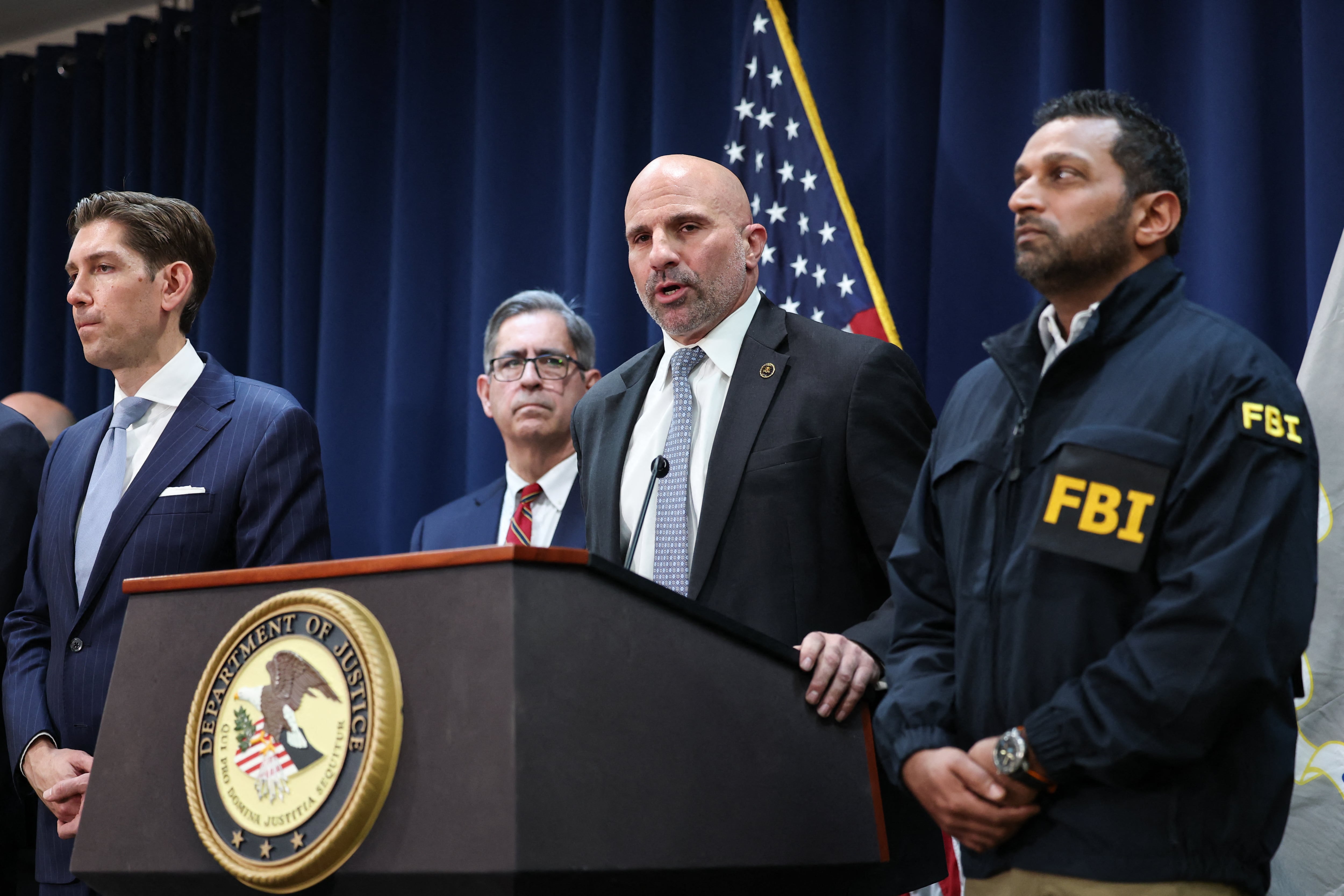The jury in the trial of Ruth Lawrence can return alternative verdicts of assisting an offender if they find the prosecution has not argued, beyond a reasonable doubt, that she was part of a joint enterprise to murder two men over a decade ago.
On Wednesday, Mr Justice Tony Hunt delivered his charge to the 12-person jury. He said for Ms Lawrence to be guilty of murder on the basis of joint enterprise, the accused must have assisted in a concrete way in the killing of the deceased and there must have been a purpose to deliberately assisting in their deaths.
The trial has heard Ms Lawrence was extradited from South Africa to face trial in 2023, nearly a decade after the bodies of Anthony Keegan (33) and Eoin O’Connor (32) were found on a lake island in the midlands.
Ms Lawrence (46), originally from Clontarf in Dublin but with an address at Patricks Cottage, Ross, Mountnugent, Co Meath, has pleaded not guilty to murdering Mr Keegan and Mr O’Connor at an unknown location within the State on a date between April 22nd, 2014 and May 26th, 2014, both dates inclusive.
READ MORE
The trial has heard that two protected witnesses – father and daughter Jason and Stacey Symes – came forward to An Garda Síochána in 2014. They gave voluntary statements about the alleged involvement of Ms Lawrence and her boyfriend, South African national Neville van der Westhuizen, in the murders.
Continuing his charge on Wednesday, Mr Justice Hunt told the jury the two counts – namely the murder of Mr O’Connor and the murder of Mr Keegan – needed to be considered separately.
Mr Justice Hunt said the most obvious difference between the two counts, in support of the allegation that Ms Lawrence is complicit in the murder of Mr O’Connor, was that “the prosecution say that they have an admission made to Stacey Symes”. The judge said the case in relation to Mr Keegan does not relate to this.
Key witness Stacey Symes, who has the benefit of the Witness Security Programme along with her father, gave evidence to the trial that Ms Lawrence told her she had shot Mr O’Connor “but it went wrong”, so her boyfriend Neville “took over”. The witness also said she and her father were asked to help move the bodies of the two men.
Mr Justice Hunt told the panel if they decide to convict on one count, it doesn’t mean they necessarily convict on the other. The judge said if the jury was not satisfied beyond a reasonable doubt that Ms Lawrence was complicit in either of the murders, then an alternative verdict arises of assisting an offender.
He said a verdict of impeding or assisting an offender is an alternative to a guilty verdict on the murder charges. He explained that this arises only if they consider the prosecution did not make its case beyond a reasonable doubt.
He said the panel was considering the murder charges on the basis of the prosecution saying Ms Lawrence was a participant in the joint enterprise to commit murder.
Undoubtedly, he said murder was committed in both the case of Mr O’Connor and Mr Keegan. The question for the jury, though, was what had been proved in terms of Ms Lawrence’s participation.
Mr Justice Hunt said murder can be committed in a joint enterprise and a person does not have to pull the trigger or “whatever the agency of death may be”. He said a person may be convicted of murder on the basis of being a participant of joint enterprise, which arises on the facts of this case.
To be guilty of murder on joint enterprise, he added, the accused must assist in a concrete way in the killing of the deceased and there must be a purpose to deliberately assisting in the killing or serious injury. “That is what is required; it goes beyond mere participation,” the judge said.
He said if the jurors were satisfied beyond a reasonable doubt that Ms Lawrence had agreed with another or others to commit murder, and if she had played an active part in it which proved a concrete contribution to the execution of the agreement, then they were entitled to convict her of murder.
“If you think she was not part of the agreement or if the scope of the agreement didn’t extend that far, or if she was there as some spectator rather than an active participant, it wouldn’t be enough,” he added.
Mr Justice Hunt said it was the jury’s decision as to whether the witnesses in the case were reliable, unreliable, trustworthy or capable of belief. He said the reliability of the main witness in the case, Ms Symes, had been impugned by the defence in its closing speech.













